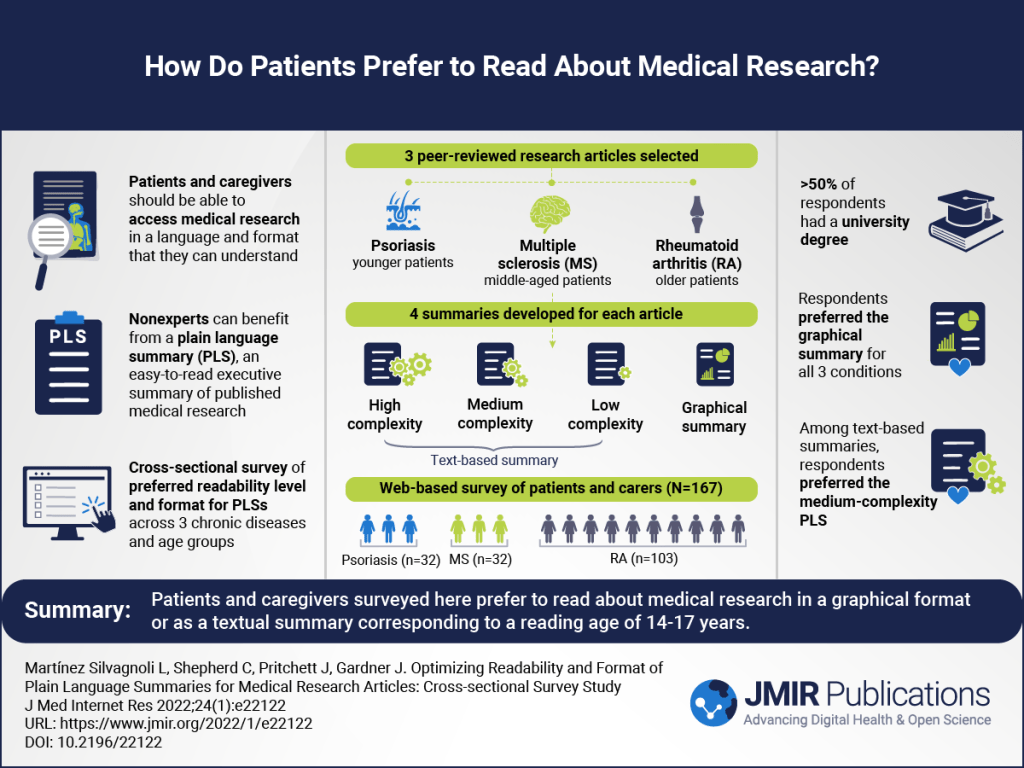- Written by Joanne Walker
Do patients have a preference for formats of plain language summaries?
A new article published in Journal of Medical Internet Research looks at patient preferences for the readability and format of plain language summaries (PLS) of research articles. In the study, 3 articles were selected about different illnesses. To ensure different age groups were included in the study, articles were chosen about 3 conditions affecting different populations: psoriasis, which mainly affects younger people; multiple sclerosis, which predominantly affects middle-aged patients; and rheumatoid arthritis, which occurs mainly in older people.
One article was selected per condition and 4 different types of PLS were created; 3 were text-only summaries of varying complexity and 1 was an infographic. A survey was then sent to UK-based patient association websites and Facebook patient support groups to understand what people thought about the 4 types of PLS in terms of readability and format they preferred.
The results showed that, for all 3 conditions, the preferred type of PLS was the infographic followed by the PLS of medium complexity (reading age 14-17 years, US Grade 9-11). Whilst the study has some limitations, such as the people surveyed may have been a more educated population than the general public, the authors conclude that “authors of medical articles should remember these results when writing summaries for patients”.
The full article called ‘Optimizing Readability and Format of Plain Language Summaries for Medical Research Articles: Cross-sectional Survey Study’ can be read for free here. A infographic-style plain language summary also accompanies the article online.

